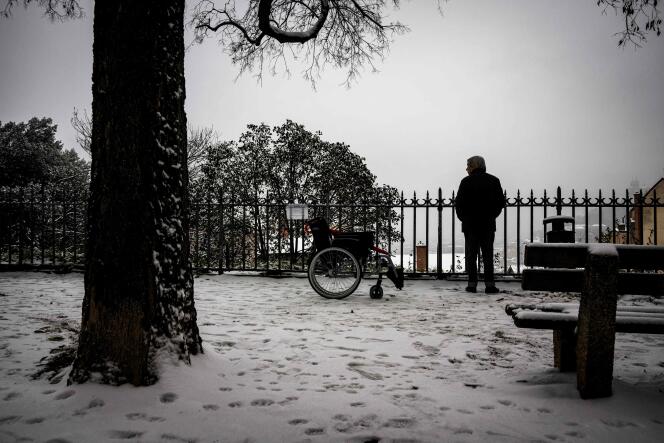Eva, 21 years old, took a long time to recognize that, sometimes, ” she is sick of it “. She said it for the first time three years ago, during a location scout for a documentary on caregivers. The director had come to spend time with her and her family, in Juvisy, in the Paris region, to understand their daily life alongside Lubin, her brother, 16 years old today, seriously disabled since early childhood. “With my parents, my sister, my brother, we really said things to each other. I admitted that sometimes I get drunk! Until then, I hadn’t really allowed myself to say it or even think it. He’s my brother, it’s normal that I help him! »
His brother’s illness, infantile spinal muscular atrophy, began when he was 3 years old. Lubin’s muscles began to atrophy, leaving him confined to a wheelchair. “We learned to live as a group of five, dividing the work naturally. Everyone took charge of aspects of daily life. » Eva often helps him get dressed and with chair-shower-bed transfers. With her sister, Alice, 19, she also takes care of household chores to give her parents time to take care of Lubin. They always made sure that she could follow a normal schooling, without missing any classes. A violinist since the age of 7, holder of a literary baccalaureate and a national diploma in ceramic crafts and design, Eva is now preparing a diploma to become a performing musician, “but the situation of [sa] family always remains in a corner of [sa] head “.
Eva’s case is far from being an exception. According to the Campus-Care survey conducted in 2019-2020 with 6,767 students, 26% of caregivers take care of a brother or sister. Unsurprisingly, the vast majority of these young caregivers are girls (86%). . “International studies conclude that there is a greater probability of taking on caring responsibilities at a young age when you are a girl and/or the eldest sibling”noted the National Institute of Youth and Popular Education in a February 2022 study which scrutinized the trajectories of these young caregivers aged 17 to 25.
Different implications
Result: they tend to choose sectors that will lead them to professions focused on others (help, care, education). They are also more involved than the average, investing, for example, alongside associations supporting young carers. Eva is no exception to the rule and is well aware of it: “I tend to want to take care of others. » She wanted to be a young volunteer firefighter and is now part of the national association Young carers together (JADE).
You have 45% of this article left to read. The rest is reserved for subscribers.
